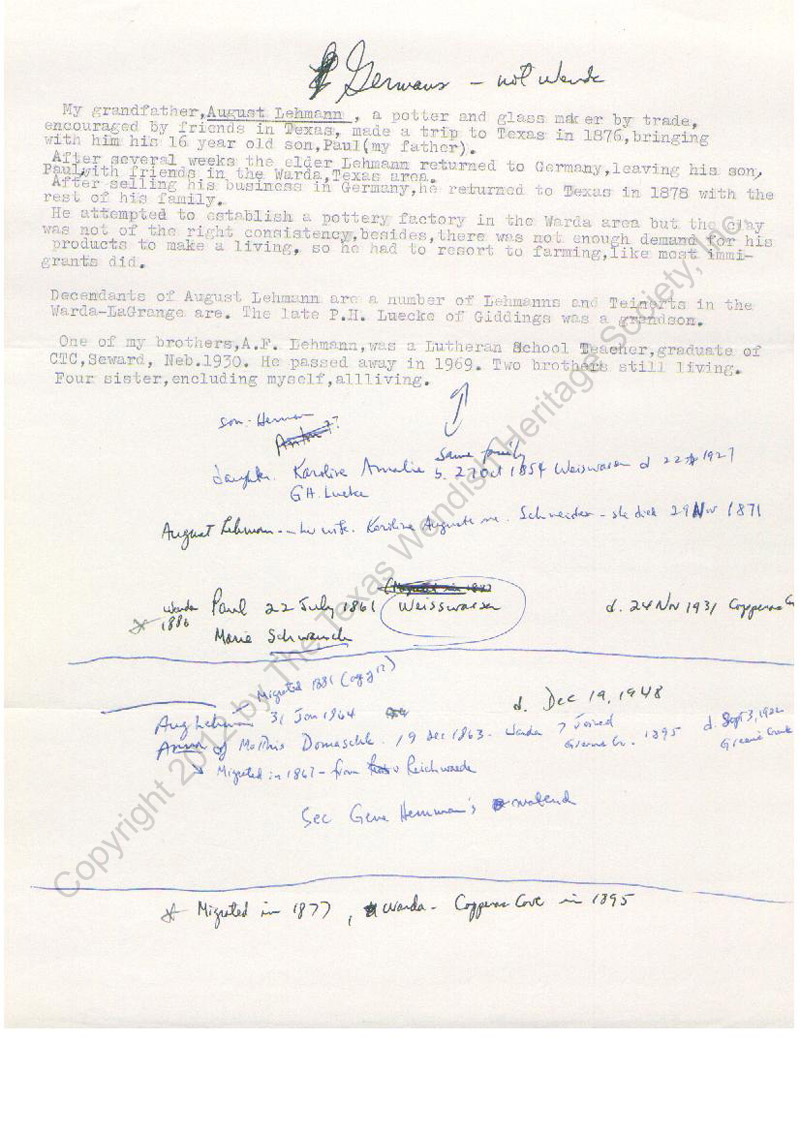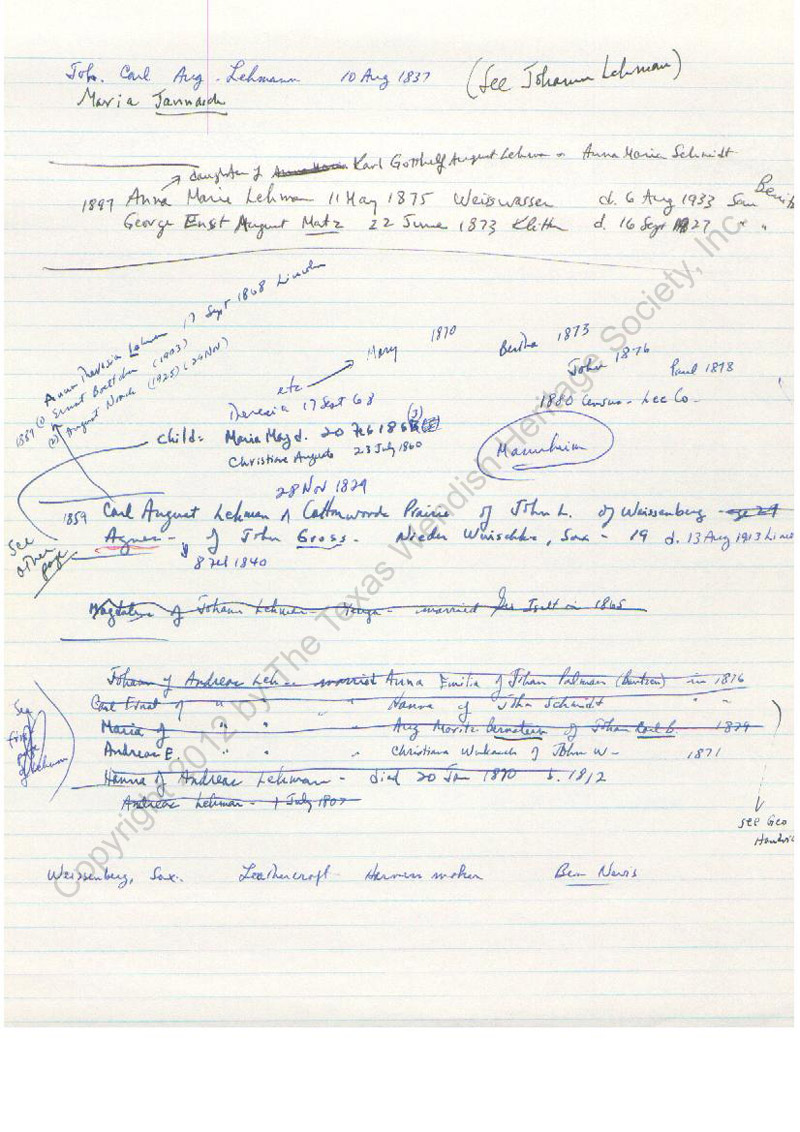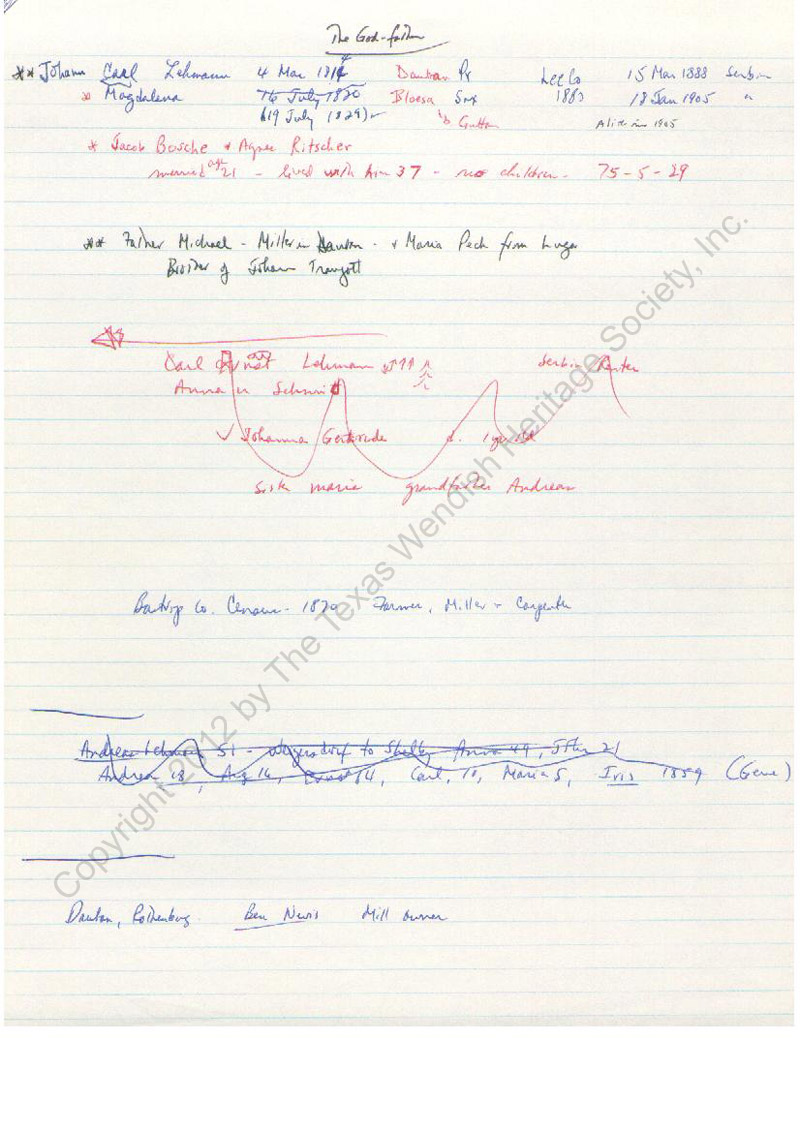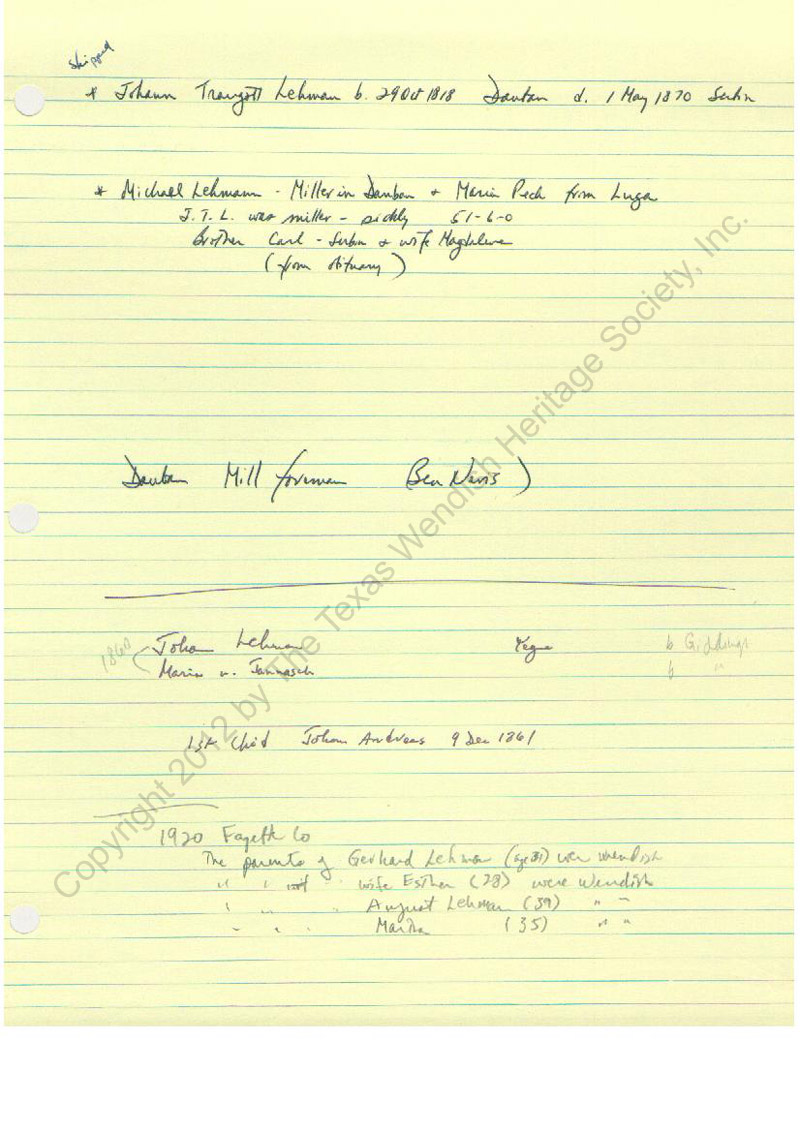Johann Carl Lehmann (Jan Korla Wi?az)(Ben Nevis #6)
Although Carl Lehmann and his wife had no children of their own, they could easily claim the title of God-parents of the Serbin community. In the thirty year period, from 1854 to 1883, they served as sponsors or witnesses at the baptisms of fifty-six children. This record, as much as any other indicator, testifies to the respect and affection the Wends had for this couple.
Carl was born at Dauban, three miles north of Weigersdorf, on March 4, 1814, where his father, Michael, owned a mill. His wife Magdalena n. Bosche, whom he married in 1850, was from Bloesa, in Saxony, and fifteen years his junior. He was one of the early members of the independent congregation that eventually called Johann Kilian of Kotitz to be the pastor of their Old Lutheran congregation. Until the sanctuary could be built, services were held in homes, including the Lehmann home. Lehmann must have been successful because he eventually owned his own mill and some additional property, and Kilian identified him as a master miller. When the number of Wends interested in migration was sufficiently large, they formed an emigration association and elected Lehmann the president. Then in May 1854 Lehmann, as president, signed the call from the association to Kilian asking him to be the pastor of the group migrating to Texas. During the voyage to America Lehmann continued to serve as leader of the church council.
Johann Traugott Lehmann, a younger brother, also migrated to Texas. He never married, and although he was described as sickly, he lived to the age of fifty-one. In Europe, he worked as a mill foreman.
Lehmann and Johann Dube were instrumental in obtaining the land for settlement and went to the Land Office in Austin to find not only a block of land, but a person who had title and was willing to sell. After they purchased the league of land, Lehmann received title to 247 acres and in 1855 was the second largest landholder in the community. One 111 acre tract of land adjoined the congregation?s ninety-five acres, and Kilian referred to him as his neighbor. Another portion of land he subdivided into lots and sold them to create the town of Serbin. In addition to farming, Lehmann worked as the miller in the colony. Anne Blasig, in her book, reports that Lehmann took his mill with him to Texas and, using steam for power, ground corn into cornmeal for the settlers.
Lehmann as a trustee, participated in the construction of all the church buildings. His support was especially important for the edifice still used today, when he helped gather the materials for construction and advanced money to purchase them. The construction was completed in 1871, and by 1874 the congregation?s debt had been reduced to $1,000. Two hundred was owed to Lehmann.
Lehmann kept in touch with the European Wends by subscribing to the Bautzen newspaper, SerbskeNowiny. In 1859, he provided diplomatic assistance in patching up the rift, dating back to the days of migration, between the newspaper?s editor, Jan Smoler and Pastor Kilian. Then in 1872, when some Texas Wends desired to purchase Wendish books, he headed a project to collect money and ordered the books from Smoler?s book shop in Bautzen.
According to the 1880 Agricultural Census Lehmann, then at age sixty-six, had fifty acres under plow, and owned an additional 140 acres of unimproved land. He owned two horses, six milk cows, twenty-one other cattle, and eleven swine. And he produced ten bushels of corn and one bale of cotton. Eight years later, in 1888, this stalwart of the Wendish community died, leaving a widow who lived on until 1905. |




